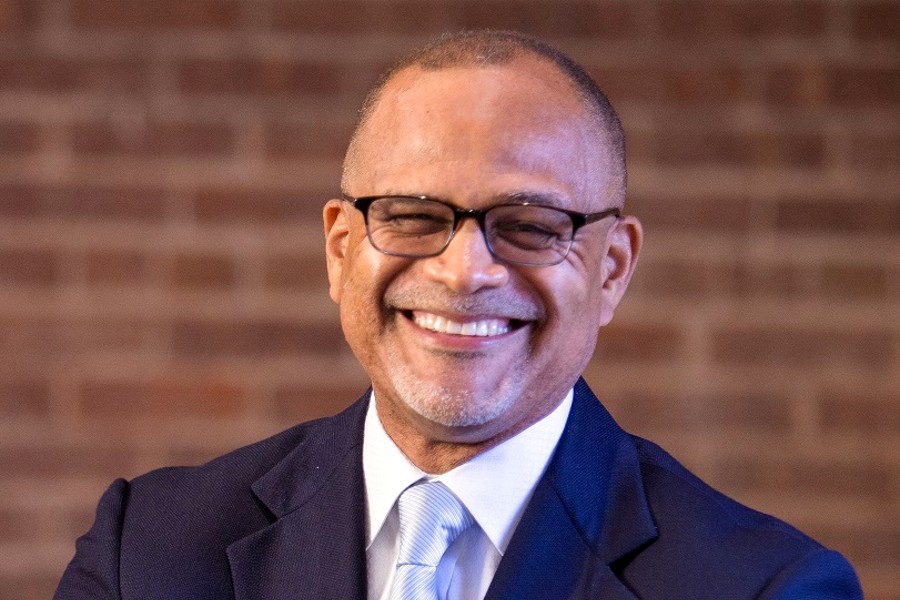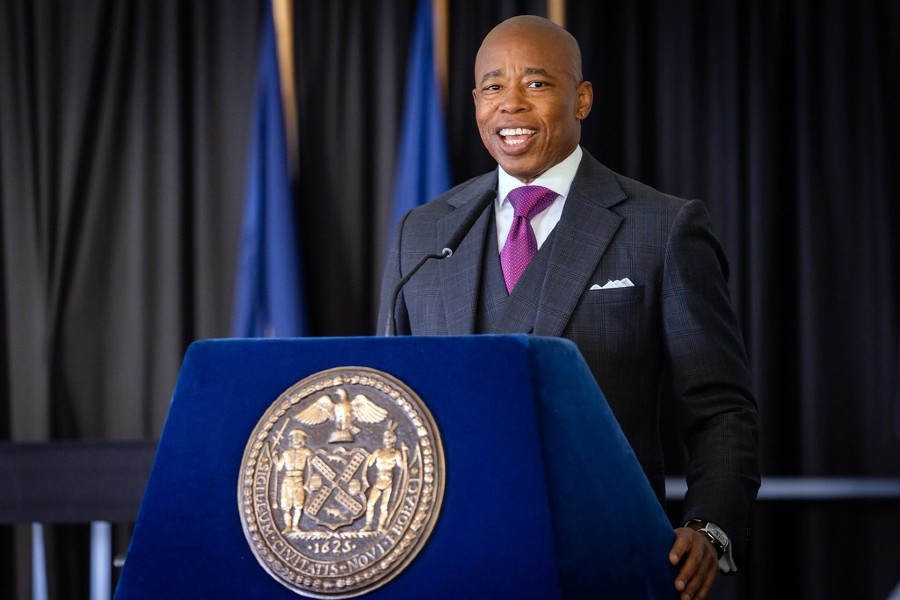 Mayor Bill de Blasio today issued a letter to Governor Andrew Cuomo, urging the State to take substantive steps to reverse decades of disinvestment and address the underlying needs of New Yorkers experiencing homelessness.
Mayor Bill de Blasio today issued a letter to Governor Andrew Cuomo, urging the State to take substantive steps to reverse decades of disinvestment and address the underlying needs of New Yorkers experiencing homelessness.
In the letter, the Mayor urges the State to commit to increasing, rather than cutting, programs that help the most vulnerable New Yorkers, including rental assistance, supportive housing, shelter services, TANF benefits, mental health teams, and Medicaid.
The text of the letter is in full below:
Dear Governor Cuomo:
In addition to other topics including the COVID-19 pandemic, you spoke about homelessness during a recent press conference.
While the number of New Yorkers in our shelters, particularly families, has actually decreased significantly – contrary to your claim this week that homelessness has increased – these New Yorkers in need are facing historic challenges.
These challenges have been deepened by years and years of neglect on the federal and state levels. For a decade, state leadership has cut resources that keep New Yorkers in their homes, and the most recent budget proposal is on track to do more of the same.
We need you to go beyond simply calling for the deployment of law enforcement and instead take the following substantive steps to address the underlying needs of New Yorkers experiencing homelessness.
Rental Assistance: Increase the Rent Levels for State Rental Assistance to the HUD-set FMR Rent Level
As the former Secretary of the federal Department of Housing and Urban Development (HUD), I know that you are aware that the HUD Fair Market Rent (FMR) level is the correct standard for setting rent subsidies.
Yet your administration refuses to use this standard for your State FHEPS program – and if we did so on our own for our supplemental City FHEPS program, among other consequences, it would lead to the source of income discrimination when landlords favor City FHEPS voucher holders over State FHEPS voucher holders.
The solution is hiding in plain sight: you should increase the rent levels for State FHEPS to the HUD-set FMR rent level through the Home Stability Support program proposed by both houses of the Legislature.
This immediate step can prevent and alleviate homelessness which has increased throughout the state, even as we have reduced the New York City Department of Homeless Services shelter census through significant local government investments.
Supportive Housing: Fully Fund the New York/New York Units and the Planned State Units
The State has continually underfunded the existing supportive housing stock in New York City and across the state, failing to keep up with increasing rent costs.
These long-standing supportive housing units (New York/New York I, II, and III) have been either wholly funded or split funded with the State for decades.
It is widely recognized that these New York/New York units in New York City were not enough to meet the need for vulnerable New Yorkers, and in November of 2015, unable to reach an agreement with the State, I announced NYC 15/15, which is the largest municipal commitment to supportive housing.
NYC 15/15 will result in the development of 15,000 units of supportive housing over 15 years and is modeled on the New York/New York agreements.
Two years ago, the City added more funding to keep the older New York/New York-funded supportive housing units from being lost because of rental market pressures, but the State has not stepped up to increase its share.
These older units are now at risk of being lost due to the State’s underfunding. Even as the State and City have made investments in new units, the loss of these older units when the unmet need for units is so great simply cannot happen.
The State must do its part to prevent the loss of these older New York/New York units. Moreover, while our NYC 15/15 supportive housing plan is fully funded in the City budget, your announced plan for new supportive housing units is not, which must be fixed in the current budget.
Support for Shelter Services and Outreach: Restore the State’s Traditional 50/50 Cost Split For Single Adult Shelters in NYC, Outreach Workers, Safe Havens, Stabilization Beds, and the Cost Of Homeless Services for the Overnight MTA Shutdown Initiative
Although the State and the City are both obligated under the New York State Constitution and a Consent Decree to provide shelter to single adults experiencing homelessness, the State has reduced its support for single adult shelter in New York City from 50/50 to a mere nine percent, and in the current budget, you have proposed a further cut.
Moreover, the State provides zero dollars to support the 600 outreach workers and more than 3,000 safe haven and stabilization beds that we have funded to enable nearly 4,000 people to come inside from the streets and subways and remain off them since 2016.
And where the State does control street homeless outreach – in Penn Station through the MTA – the staffing levels that are funded are below what we fund in the programs we operate, including our emergency initiative during the overnight MTA shutdown that has helped more than 750 people come off and remain off the subways.
Simply put, the State must return to paying its fair share for these life-saving services.
TANF and EAF Funding: Reverse Cost-Shifts to NYC
In the prior two State budgets, New York City has been subjected to a State cost-shift of more than $180M for public benefits for struggling families with children.
These cuts affected funding for cash benefits for vulnerable New Yorkers, as well as homeless shelter services and emergency programs for survivors of domestic violence.
These are mandated services under the New York State Constitution and Social Services Law and are more critical than ever in this time of growing income inequality.
The cost-shifts negatively impact the City’s ability to invest in essential services to prevent and alleviate homelessness, as well as other critical services for low-income families and individuals, as New York City takes on more and more fiscal responsibilities that were formally the State’s.
And in contrast to these State cuts to the City, we are investing $166M annually in a first-in-the-nation right-to-counsel law that, pre-pandemic, helped to drive down evictions by 41 percent while they were on the rise all across the country.
We are also providing funding for rental assistance and rehousing programs that have helped more than 155,000 people move out of a shelter or avoid homelessness in the first place.
These prevention and rehousing initiatives have enabled us to drive down the Department of Homeless Services shelter census to less than 53,000, with the number of children and adults in family shelters at the lowest level since 2012.
As partners, there is so much more that we can accomplish together, but these cost-shifts from the State to the City stand in the way.
Mobile Health Teams (ACT): Increase the State Medicaid Cap to Support Reimbursement for Additional ACT Teams
Assertive Community Treatment (ACT) is an evidence-based practice that offers mobile treatment, rehabilitation, and support services to individuals that have been diagnosed with serious mental illness using a person-centered, recovery-based approach.
Demand for ACT far exceeds the current capacity in New York City. There are nearly 600 eligible persons currently awaiting an available ACT team.
New York City asked New York State to increase the State Medicaid cap to support reimbursement for additional ACT teams since Medicaid revenue supports most of the operating costs and new licenses cannot be issued without the ability to cover the costs to Medicaid. (Net deficit funding via City or State contracts covers the other costs.)
However, the State did not agree to lift the Medicaid cap, thus preventing the city from hiring the nine additional teams that are needed immediately.
Medicaid Rate Cut: Reverse the Rate Cuts
In addition to affecting the ability to fund and release further Medicaid licenses for ACT teams, the State continues to cut Medicaid rates, this year by another 1 percent across the board.
This is on top of the 1.5 percent across the board rate reduction the State made last year and reduces Medicaid revenue for Health + Hospitals by an additional $60M annually.
H+H relies heavily on its Medicaid revenue; this cut puts key H+H services for our most vulnerable residents at risk. Medicaid covers 3.5 million people in the city and serves as the primary insurance vehicle for most of our residents.
Affordable Care Act Medicaid Coverage: Release the $100M ACA Funding Owed to NYC
The ACA expanded Medicaid coverage to essentially all adults under age 65 with incomes below 138 percent of the Federal Poverty Line. States that opted to implement the expansion were given eFMAP assistance for the newly covered populations.
Each year, NYS distributes 80 percent of the eFMAP assistance to localities by reducing their mandated contributions to State Medicaid costs.
NYS holds on to the remaining 20 percent and later passes it to localities via retroactive payments. NYC is owed $100M that is urgently needed in the middle of the continuing public health emergency.
Indigent Care Pool (ICP): Reinstate the State’s Contribution to Public Indigent Care Pool
The State is discontinuing its contribution to the Public Indigent Care Pool, an action that primarily impacts public hospitals in New York City serving our most vulnerable patients.
The ICP is a program that provides funding to hospitals to pay for services provided to low-income patients. This would be an impact to H+H of at least $60M per year.
Sincerely,
Bill de Blasio
Mayor
To find more information about Mayor Bill de Blasio on the site click here.
Become a Harlem Insider!
By submitting this form, you are consenting to receive marketing emails from: Harlem World Magazine, 2521 1/2 west 42nd street, Los Angeles, CA, 90008, https://www.harlemworldmagazine.com. You can revoke your consent to receive emails at any time by using the SafeUnsubscribe® link, found at the bottom of every email. Emails are serviced by Constant Contact








